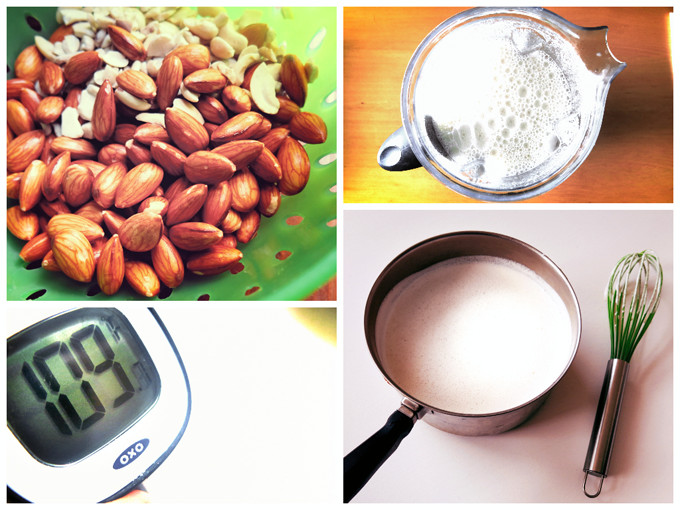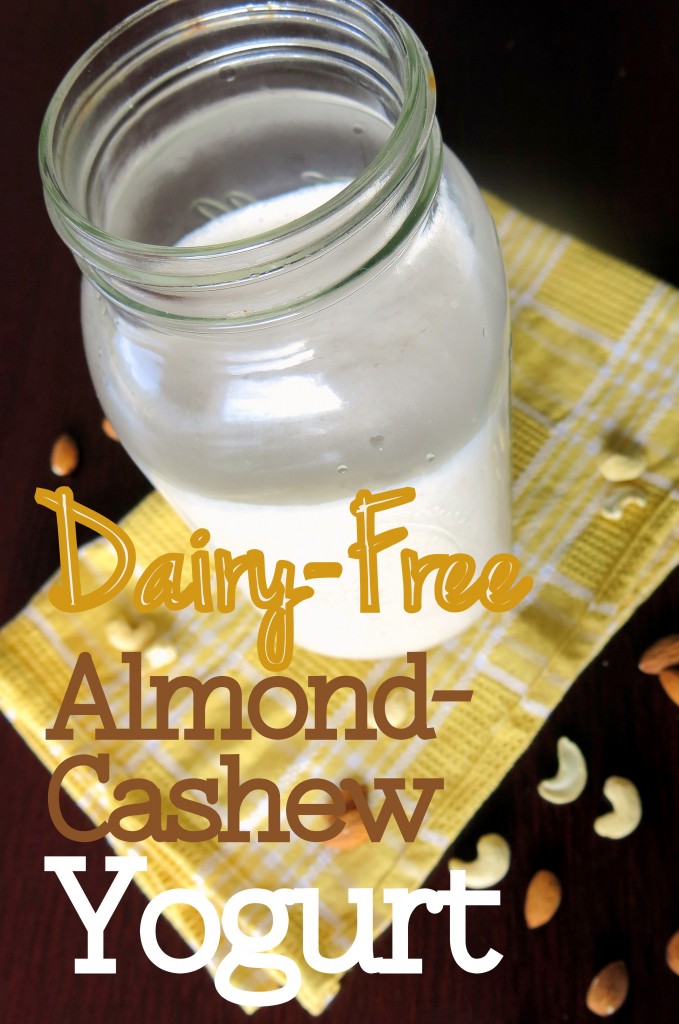 Yogurt is one of those things that was always a little intimidating to try and make myself. And vegan yogurt? It seemed like rocket science.
Yogurt is one of those things that was always a little intimidating to try and make myself. And vegan yogurt? It seemed like rocket science.
Considering how expensive vegan yogurt is and how limited the options are, I always wanted to figure out a way to make my own – something that was nutritious and plant-based and made from whole, clean ingredients. But it just seemed so complicated. I searched around on the internet and couldn’t find a great recipe. And most of the recipes I found online made it seem like I’d need a special starter and a yogurt maker or incubator of some kind. So it kind of just seemed like too much trouble.
But then I tried it. And you know what? It really wasn’t rocket science.
It’s honestly not at all difficult. Like at all. All you need to do to make this particular yogurt is blend up some soaked almonds and cashews into a “milk”, heat it, add some probiotics, and set it aside to culture. That’s it.
And no, you don’t need a yogurt maker. The first trick to getting yogurt to culture is using a high-quality probiotic or yogurt starter. More often than not, I just use a few capsules of a probiotic supplement as my starter because it’s just so easy and inexpensive. (I store the probiotics in my fridge to preserve their quality and prolong their shelf life.) But it’s just as easy to use a couple of tablespoons of a store-bought yogurt (dairy-free or not) to get it started.
The second trick is simply making sure the yogurt stays warm (not hot!) while it’s culturing. In the winter, I’ll wrap it up in some dish towels and either leave it by the fireplace or woodstove if I’ve got one going. In the summer, I’ll simply cover it with a towel and leave it in a really warm room. If I don’t have a consistently warm place to put it, I’ll just place it in an insulated cooler bag with two jars of hot water on either side. Easy.
And when you’re done, you’re left with a creamy, tangy, delicious yogurt that’s full of protein, healthy fats, beneficial probiotics and a surprising amount of fiber. No thickeners, no sweeteners, no artificial flavors, and absolutely no cholesterol. Nothing but good stuff.
Use this yogurt plain in smoothies, or sweeten it up for parfaits or to make frozen yogurt in your favorite flavor. Oh, and you know what else you can make with this yogurt? Dairy-free cheese. Vegan cheese that tastes great and actually melts. Ohhh yes. Stay tuned, the recipe’s coming up soon. You’re gonna want to hang around for this one.
- 1 cup raw almonds, soaked overnight
- ⅔ cup raw cashews, soaked overnight
- 4 cups water
- 3 capsules of probiotic supplement*
- Drain nuts of their soaking water and rinse well. Place nuts and water in blender and blend on high speed for several minutes until smooth and creamy.
- Pour the nut milk into a medium saucepan and heat over medium-low heat until it reaches 110 degrees Fahrenheit. Remove from heat and whisk in the contents of the probiotic capsules.
- Pour into a large jar, wrap in a kitchen towel, and place in a warm place to culture for 4-8 hours or overnight.** Yogurt will thicken and will start to taste and smell slightly tangy. Refrigerate until ready to use.
**The ideal temperature for yogurt to culture at is at least 80 degrees, but that doesn't mean that you need to go to great measures to keep your jar of yogurt warm. A warm place by a heater or woodstove should suffice. Other options include placing the yogurt in an insulated bag or cooler with another jar full of hot water or in the oven with the oven light on to provide a bit of extra heat. Or just leave it at room temperature, but know that you'll need to leave it to culture for longer before it's done.
-This yogurt has a tendency to separate a bit. Either stir it periodically to reconstitute it, or, for a thicker yogurt, drain the liquid that tends to separate out at the bottom of the jar. The yogurt will get even thicker and tangier after being refrigerated.


Do you strain the nut milk after blending or use it all with the nut meal in it?
I actually don’t strain it – it makes the yogurt thicker and provides extra fiber, which is always a good thing in my book!
How would it work using kefir grains to get the ferment. I am not vegan so dairy isn’t a problem
That’s a really good question! I’ve never tried it but I’m sure it would work just fine if you followed the same procedure. It might not come out quite as thick, so you may need to adjust the amount of liquid in the recipe.
You’ve gotten me curious – I’m definitely going to have to try it sometime!
Hi, I just made this for the first time and have a couple questions. I had to separate it into 2 jars, and while it was fermenting, one of the batches seemed to be getting thicker so I put it in the fridge and it turned out very well! I left the other jar longer, expecting it to thicken more and when I checked again it was still quite runny but tasted like it had fermented a little too long. How do you know when it’s ready? The probiotics we have are 45 billion so I figured we could just use one capsule and leave it a little longer… does that make sense?
This yogurt has a tendency to separate a bit as it sits – the water tends to settle at the bottom while the nut solids stay at the top. Even when using a single jar, I recommend to stir it periodically while it’s culturing to reconstitute it, or for a thicker yogurt, simply drain the liquid that tends to separate out at the bottom of the jar once it’s done (that’s what I like to do). In separating it into two jars, you may have inadvertently made one thicker than the other so it cultured differently. If using two jars, try stirring or blending very well immediately before pouring or using a “back and forth” pouring method for a more even distribution and consistency. You could also try cutting back on the amount of water by a little bit.
The yogurt should be ready when you see it getting noticeably thicker and when it starts to get that tangy flavor.
And yes, one capsule of a stronger probiotic should still work just fine, but you’re right, you may need to leave it to culture just a bit longer.
Hope that helps! Thanks for reading! 🙂